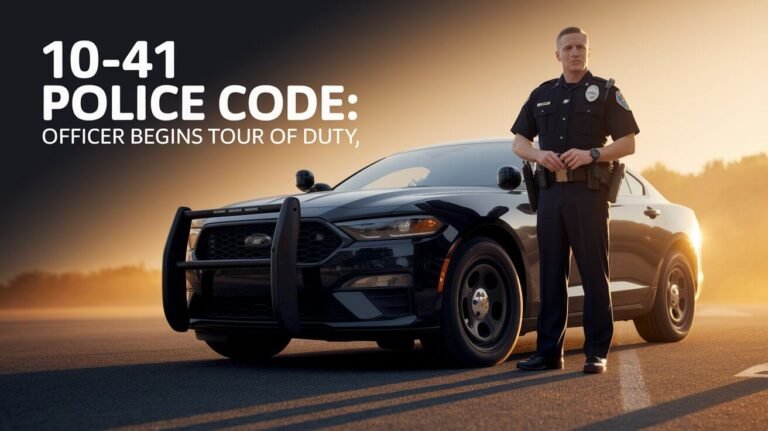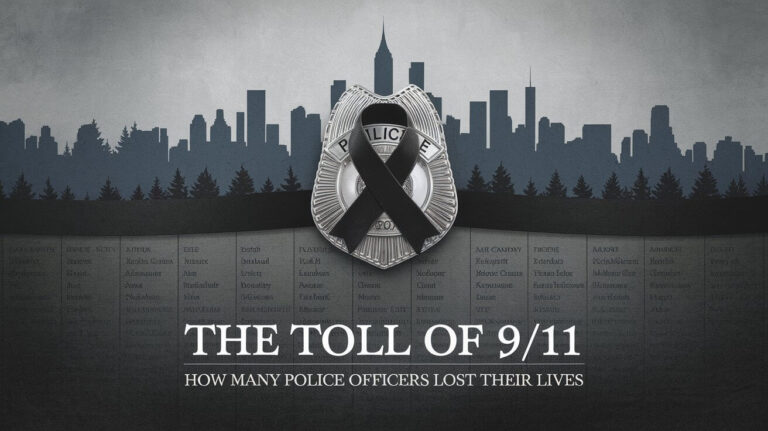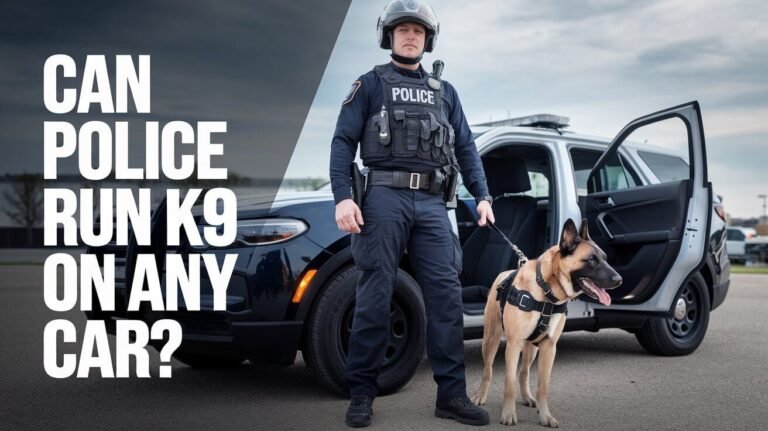10 31 Police Code: What It Means and When It’s Used

In law enforcement, effective and swift communication is crucial, especially during emergency responses. The 10-31 police code plays a significant role in this context, signaling a crime in progress or a serious incident such as a hold-up or robbery.
This specific code is part of a broader system of ten-codes used by police departments to convey vital information quickly over radio communications. Understanding the 10-31 code and its implications is essential for grasping how law enforcement agencies coordinate their responses during critical situations.
Key Takeaways
- The 10-31 code is used to indicate a crime in progress.
- It is a crucial element in law enforcement communication during emergencies.
- The code is part of a larger system of ten-codes used by police.
- Effective use of the 10-31 code enhances emergency response.
- Law enforcement agencies rely on such codes for quick communication.
What the 10-31 Police Code Means
Understanding the 10-31 police code is essential for deciphering law enforcement communication. The 10-31 code is primarily used to signal that a crime is in progress.
Definition and Basic Interpretation
The 10-31 police code, according to the APCO (Associated Public-Safety Communications Officers) standards, typically means “Crime in Progress” or “Pick Up.” This code is crucial for law enforcement officers to respond promptly to serious incidents.
Key aspects of the 10-31 code include:
- Indicating a crime is currently happening
- Signaling the need for immediate response
- Enhancing officer safety by prioritizing urgent situations
Variations Across Different Jurisdictions
While the core meaning of the 10-31 code remains consistent, its interpretation can vary slightly across different jurisdictions. For instance, some departments may use it to signal a “Pick Up” or a “Hold Up and Robbery.”
| Jurisdiction | 10-31 Code Interpretation |
|---|---|
| APCO Standard | Crime in Progress/Pick Up |
| Local Department A | Hold Up and Robbery |
| Local Department B | Crime in Progress |
Understanding these variations is crucial for effective communication among law enforcement agencies.
History of Police Codes
Understanding the history of police codes requires a look into the development of standardized communication systems. The need for clear and efficient communication in law enforcement led to the creation of the ten-code system.
Origins of the Ten-Code System
The ten-code system was developed by the Association of Public-Safety Communications Officials (APCO) to standardize police radio communications. Before its introduction, law enforcement agencies used various codes and plain language, which often led to confusion. APCO’s effort to standardize these codes marked a significant milestone in the history of police communication.
The ten-code system included codes like 10-4 for “acknowledgment” and 10-31 for “crime in progress.” This standardization improved communication efficiency and reduced misunderstandings during critical situations.
Development of the 10-31 Code
The 10-31 code, specifically, was designed to signal a crime in progress, requiring immediate response from law enforcement. Its development was part of the broader effort to create a comprehensive ten-code system. The 10-31 code became crucial in dispatching officers to emergency situations.
| Code | Description | Response Level |
|---|---|---|
| 10-31 | Crime in Progress | High |
| 10-4 | Acknowledgment | Low |
| 10-20 | Location | Medium |
Development of the 10-31 code and other ten-codes has played a vital role in shaping modern law enforcement communication. Understanding this history provides valuable insights into the importance of these codes in contemporary policing.
The 10-31 Police Code in Daily Operations
The 10-31 code is a vital component of daily police operations, facilitating rapid responses to critical situations. Law enforcement officers are trained to respond to this code with urgency, following established protocols to ensure public safety and effective crime management.
Typical Scenarios When Used
The 10-31 code is often utilized in situations involving a crime in progress, such as robberies or violent crimes. These scenarios require immediate attention from law enforcement to prevent further harm or damage.
Some common examples include:
- Bank robberies
- Hostage situations
- Violent altercations
Officer Response Protocols
When a 10-31 code is dispatched, officers are expected to follow specific response protocols. These include:
- Approaching the scene with caution
- Assessing the situation to determine the level of threat
- Coordinating with backup units to ensure a safe and effective response
Following these protocols, law enforcement officers can effectively manage 10-31 situations, minimizing risks to themselves and the public.
Regional Variations of the 10-31 Code
The application of the 10-31 code is not uniform nationwide; instead, it is influenced by regional law enforcement practices and historical contexts. This variation is crucial for understanding how different regions respond to and manage emergencies.
East Coast vs. West Coast Interpretations
The East Coast and West Coast have different interpretations of the 10-31 code, largely due to historical and cultural factors. For instance, areas with higher crime rates on the East Coast might use the code more frequently, while West Coast regions might have different protocols based on their specific law enforcement needs.
Rural vs. Urban Usage Differences
There’s a notable difference in how the 10-31 code is used in rural versus urban areas. Urban areas, with their higher population densities and crime rates, tend to use the code more often. In contrast, rural areas might have less frequent usage but require longer response times due to the larger distances between law enforcement units and emergency locations.
State-by-State Variations
State-by-state variations also exist, with some states having specific guidelines or modifications to the 10-31 code to suit local law enforcement practices. For example, states with major metropolitan areas might have more stringent protocols for 10-31 situations, while less populated states might have more generalized procedures.
Understanding these regional variations is key to effective inter-agency cooperation and response to emergencies. Law enforcement agencies must be aware of these differences to ensure seamless communication and coordination across different jurisdictions.
- Regional differences impact the application of the 10-31 code.
- Local law enforcement practices and historical contexts influence these variations.
- Understanding these differences is crucial for effective emergency response.
Dispatch Procedures for 10-31 Calls
Effective dispatch procedures are crucial for managing 10-31 calls, which require immediate police intervention. When such a call is received, the dispatch center springs into action, following a well-established protocol to ensure a rapid and effective response.
Call Center Protocols
Call center protocols for 10-31 calls involve a systematic approach to gathering critical information from the caller. Dispatchers are trained to remain calm and ask specific questions to assess the situation accurately. This includes obtaining the location, nature of the emergency, and any other relevant details.
- Quickly assess the situation and the level of urgency.
- Gather essential information from the caller.
- Enter the information into the dispatch system promptly.
Resource Allocation and Prioritization
Once the necessary information is gathered, the dispatch center proceeds to allocate resources. Prioritization is key in 10-31 situations, as these calls are considered high-priority emergencies. The dispatch team evaluates the available units and assigns the most appropriate response team based on proximity and availability.
- Evaluate the available response units and their locations.
- Assign the nearest and most suitable unit to the call.
- Continuously monitor the response and adjust as necessary.
Officer Safety During 10-31 Situations
The safety of officers during 10-31 situations is paramount, necessitating advanced training and precise protocols. Officer safety is a critical concern for law enforcement agencies, particularly during responses to crimes in progress, which are often signaled by the 10-31 code.
Tactical Approaches
Officers are trained in specific tactical approaches to manage 10-31 situations effectively. These include surveillance techniques, communication strategies, and perimeter control. Effective tactical approaches help minimize risks to officers and enhance the success of the operation.
Backup and Support Procedures
Backup and support procedures are crucial during 10-31 responses. These procedures involve coordinating with additional units, securing the scene, and providing medical assistance if needed. A well-coordinated backup plan ensures that officers have the necessary support to handle potentially dangerous situations.
Risk Assessment Methods
Risk assessment is a vital component of managing 10-31 situations. Officers use various methods to assess risks, including evaluating the scene, gathering intelligence, and assessing potential threats. Accurate risk assessment enables officers to make informed decisions and take appropriate actions.
| Tactical Approach | Backup Procedure | Risk Assessment Method |
|---|---|---|
| Surveillance Techniques | Coordinating with Additional Units | Evaluating the Scene |
| Communication Strategies | Securing the Scene | Gathering Intelligence |
| Perimeter Control | Providing Medical Assistance | Assessing Potential Threats |
Emphasizing officer safety and detailing the tactical approaches, backup procedures, and risk assessment methods used during 10-31 situations, law enforcement agencies can better prepare officers for the challenges they may face.
10-31 Code vs. Other Emergency Codes
Understanding the nuances of the 10-31 police code in comparison to other emergency codes is crucial for effective law enforcement communication. The 10-31 code is used to signal a crime in progress or a dangerous situation, but it’s not the only code used by police departments.
Comparison with Similar Emergency Codes
Other emergency codes, such as 10-33 (Emergency) or 10-13 (Weather-Road Report), serve different purposes but may be used in conjunction with or instead of 10-31 in certain situations. For instance, a 10-33 code might be used to signal a more critical emergency that requires immediate attention from all units. In contrast, a 10-31 code is often used for crimes in progress or potentially dangerous situations that don’t necessarily require a full emergency response.
The key differences between these codes lie in their urgency and the type of response they elicit. While 10-31 indicates a need for police presence, 10-33 demands a more comprehensive response, potentially involving multiple units and a higher level of alertness.
Priority Level in Dispatch Systems
In dispatch systems, the priority level assigned to 10-31 calls reflects its urgency and the need for a swift response. Typically, 10-31 calls are given a high priority, often categorized alongside or just below 10-33 emergencies in terms of response urgency. The dispatch priority is determined based on the nature of the call, with factors such as the presence of weapons, potential for violence, and the number of people involved being considered.
Effective dispatch procedures ensure that 10-31 calls are responded to promptly, with the allocation of resources based on the severity of the situation and the availability of units.
Modern Technology and Police Codes
The advent of modern technology has revolutionized the way police codes are utilized in law enforcement. With advancements in digital communication and GPS technology, the efficiency and accuracy of police operations have significantly improved.
Digital Communication Systems
Digital communication systems have transformed the way police officers communicate during operations. These systems enable real-time updates and instant messaging, reducing response times and enhancing situational awareness. For instance, officers can quickly receive and respond to 10-31 codes, indicating a “crime in progress,” with precise details about the location and nature of the incident.
GPS and Location Tracking Integration
The integration of GPS and location tracking technology has further enhanced police operations. This technology allows dispatchers to track officer locations in real-time, ensuring that the nearest available unit responds to emergencies. It also aids in precise location identification, reducing errors in response efforts.
Future of Police Codes in Digital Era
As technology continues to evolve, the future of police codes looks promising. Emerging technologies like artificial intelligence and predictive analytics are expected to further streamline police operations. These advancements will likely lead to more sophisticated code systems, potentially replacing traditional ten-codes with more nuanced and context-specific alerts.
| Technology | Impact on Police Codes | Benefits |
|---|---|---|
| Digital Communication Systems | Enhanced real-time communication | Faster response times, improved situational awareness |
| GPS and Location Tracking | Precise location identification and tracking | Reduced response errors, optimized resource allocation |
| Artificial Intelligence | Predictive analytics and smart code systems | Proactive policing, more efficient operations |
Public Knowledge of Police Codes
The way police codes are perceived by the general public is often shaped by media representation and dramatization. The public’s understanding and interaction with these codes can have various implications, both for the public and for law enforcement agencies.
Media Portrayal and Public Perception
The media plays a significant role in shaping the public’s perception of police codes. Through movies, TV shows, and news coverage, the public is exposed to various codes, including the 10-31 code. However, dramatization can sometimes lead to inaccurate public perception. For instance, the frequency and context in which codes are used in media may not always reflect real-life practices.
Moreover, the public’s fascination with police codes can be seen in the popularity of true crime documentaries and police procedurals. These media forms not only entertain but also educate the public about police procedures, albeit with varying degrees of accuracy.
Civilian Scanner Monitoring and Ethics
Some members of the public take an active interest in monitoring police frequencies, using scanners to listen to police communications. This practice raises ethical questions, as it can potentially compromise police operations or put officers at risk if sensitive information is leaked. Ethical considerations around civilian scanner monitoring include balancing the public’s right to information with the need to protect sensitive law enforcement communications.
Furthermore, the ease of access to police frequencies through modern technology has made it easier for the public to monitor police activities. This has sparked debates about the implications of such monitoring and the need for law enforcement agencies to adapt their communication strategies to maintain operational security.
Closing Thoughts
The 10-31 police code remains a crucial element in law enforcement, facilitating swift and effective responses to serious crimes and emergencies. Its significance extends beyond the immediate response, as it also plays a role in maintaining public safety and trust in law enforcement agencies.
Understanding the 10-31 police code and its applications is essential for law enforcement professionals, as it enables them to respond appropriately to various situations. For the public, knowledge of this code can provide insight into the complexities of law enforcement communication and the measures in place to ensure public safety.
As technology continues to evolve, the use and importance of the 10-31 code will likely adapt, incorporating new communication systems and strategies. The law enforcement significance of the 10-31 code will endure, however, as it continues to serve as a critical tool in responding to emergencies and maintaining public trust.
Reader Questions
What does the 10-31 police code mean?
The 10-31 police code is used to indicate a crime in progress or a serious incident like a hold-up and robbery, although its interpretation can vary slightly across different jurisdictions.
How is the 10-31 code used in daily law enforcement operations?
The 10-31 code is used in high-pressure situations where a swift and appropriate response is critical, and law enforcement officers are trained to respond to this code with urgency, following established protocols.
Are there regional variations in the interpretation of the 10-31 code?
Yes, the application of the 10-31 code can vary significantly across different regions, with urban areas potentially using it more frequently due to higher crime rates, and rural areas having different protocols.
How do dispatch centers respond to 10-31 calls?
When a 10-31 call is received, dispatch centers follow established protocols to quickly allocate resources and prioritize the response, assessing the situation, dispatching the appropriate units, and ensuring responding officers have necessary information.
What measures are taken to ensure officer safety during 10-31 situations?
Law enforcement agencies employ various tactical approaches, backup procedures, and risk assessment methods to minimize risks and ensure a successful outcome during 10-31 situations.
How does the 10-31 code compare to other emergency codes?
Understanding how the 10-31 code compares to other emergency codes is crucial for effective communication and response, with the priority level assigned to 10-31 calls in dispatch systems reflecting its urgency.
How has modern technology impacted the use of the 10-31 code?
The integration of modern technology, such as digital communication systems and GPS tracking, has significantly improved response times, accuracy, and overall effectiveness in law enforcement operations involving the 10-31 code.
What is the public’s understanding of police codes like the 10-31 code?
The public’s understanding of police codes, including the 10-31 code, is often shaped by media portrayals, with some individuals closely following police frequencies and codes, while others may be misinformed or unaware.
What is the role of APCO in standardizing police codes?
APCO played a significant role in standardizing police codes, including the 10-31 code, to ensure clarity and consistency across different law enforcement agencies.
How do law enforcement agencies handle civilian scanner monitoring?
Ethics of civilian scanner monitoring and its implications on police operations are essential considerations, as some individuals closely follow police frequencies and codes.






